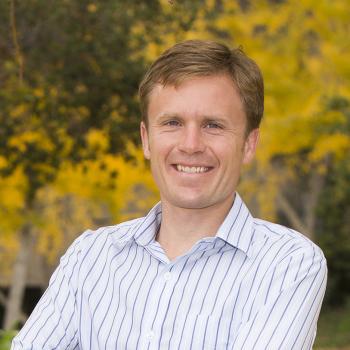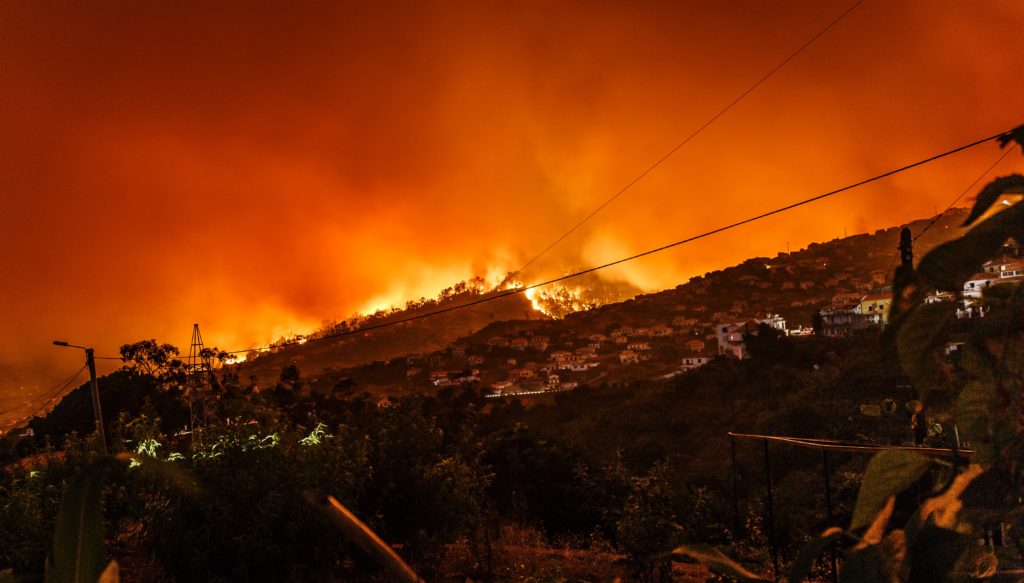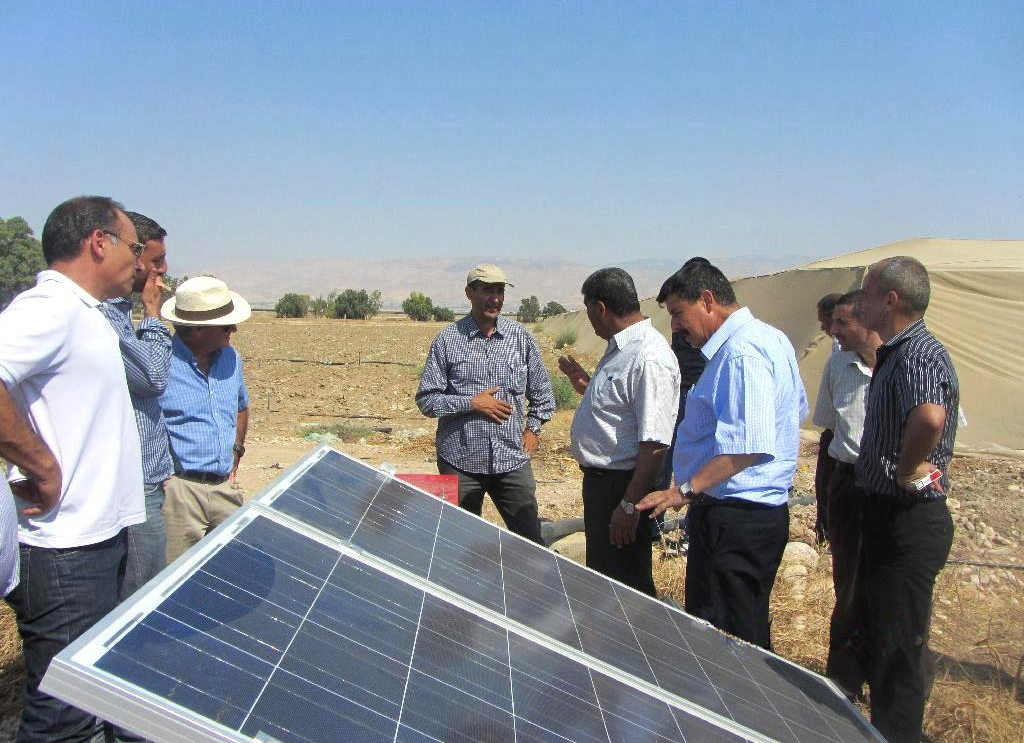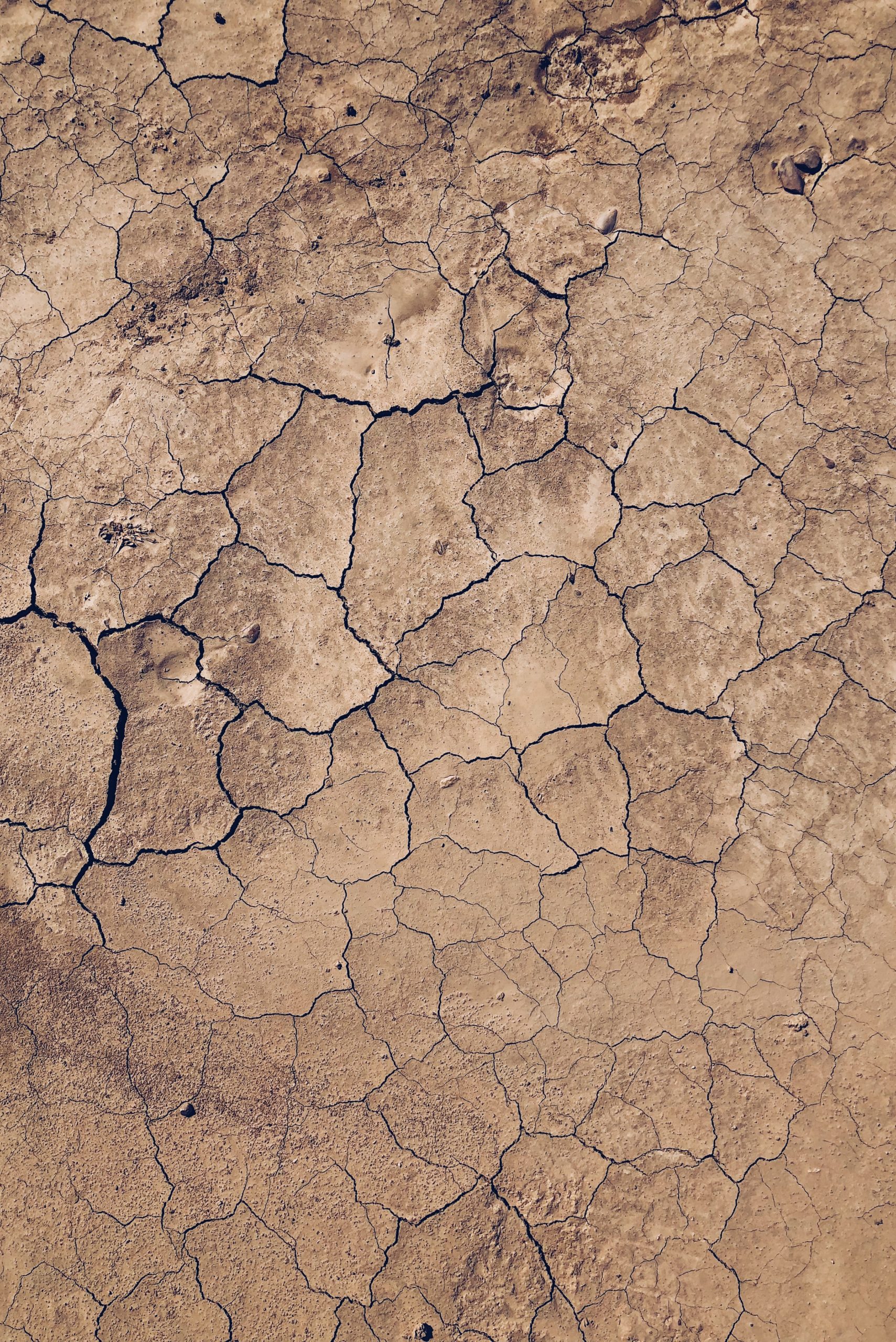Published: 11/06/2021
Global Health Faculty Fellow Dr. Marshall Burke has focused his research on quantifying the social and environmental impacts of climate change in ways that resonate with politicians, decision-makers, and the general public.
By Jamie Hansen

Many of Dr. Marshall Burke’s studies yield alarming findings: toxic wildfire smoke increases the risk of pre-term birth; heat and drought dramatically increase crop failures; and rising temperatures contribute to depression and suicide. And yet, a thread of optimism and positivity runs through his work.
“This information can be depressing,” acknowledges Burke, associate professor for Earth System Science and senior fellow at the Freeman Spogli Institute for International Studies, the Woods Institute for the Environment, and Institute for Economic Policy Research.
But, he adds, there is a flip-side. “We have a good idea what to do. This is a ship we can still turn.” We sat down with Burke to talk about his findings and what gives him hope for the future.
A record-breaking year of wildfires around the globe has raised awareness of the dangers of air quality. Can you talk about your research into how wildfires are currently contributing to air pollution—and what we can expect in the future?
Wildfires are becoming increasingly important around the world, certainly in the western United States, but also in parts of Europe and Australia. In recent decades, and particularly in the last five years, we’ve seen a large increase in wildfire activity in the United States West that has really been driven by two long-term forces. One is a century of fire suppression, and the second is the rapidly warming climate. That has meant that, in just the span of a decade, wildfires have gone from contributing maybe 10 to 20 percent of key air pollutants in the western U.S. to more than half in the worst wildfire year we studied.
That’s concerning from an air pollution perspective, but really concerning from a human health perspective. And this is not just a local problem: We have seen that people who are very distant from the fires can end up being exposed to smoke and having their health harmed.
When it comes to what we can expect in the future, the estimates are a little all over the place, from a 50 to 200 percent increase in wildfire pollution. The more conservative end of that scenario still suggests a pretty substantial increase in exposure if we do nothing to mitigate these increases. And so, it’s very likely that these sort of catastrophic years we’ve seen recently are going to become much more commonplace in the future.
Staying with air quality, you received a seed grant from the Center for Innovation in Global Health to study the impacts of air pollution in infant health in low- and middle- income countries. How did you develop an interest in this and what have you found so far?
Historically, much of the air pollution work in low and middle income countries has focused on poor indoor air quality, such as from cooking with biomass. In recent years, the attention has shifted to the really nasty air that many people breathe outdoors in many parts of the world. In the US, we have a lot of governmental sensors that tell us what the air quality is, and we have a lot of great data from private sensors. However, in most low and middle income countries, we just don’t have these good on-the-ground measures. So it’s a real scientific challenge to figure out even what people are exposed to.
So the first part of our project is to use more novel sources of data, primarily from satellites, to understand what people are exposed to and where the smoke was coming from. We’re combining that with existing household survey data to look in pretty incredible detail at birth outcomes at a really broad scale.
In our early estimates, we’re seeing that exposure to ambient air pollution can have very large and negative effects on birth outcomes. We are looking at how much of overall infant mortality is due to this air pollution exposure. Our early estimates suggest maybe a lot of it — up to a quarter or even more — can be attributed to ambient air pollution exposure.

You have studied a range of mental health impacts of climate change. What have you found the most surprising or concerning?
In some sense, it’s surprising that there is any link at all. By triangulating vital statistics and social media data from the US and in Mexico, we’ve looked at the relationship between a warming climate and mental health outcomes. We’ve seen pretty consistent relationships between hotter temperatures and increases in suicide and declines in mental health. All the data line up to suggest that, when it gets hot, people are less happy, they’re angrier on Twitter, and a small percentage of them, unfortunately, commit self-harm.
This is an under-explored climate health impact, but one that is important. We know that the overall burden of poor mental health is very high in this country and other countries. So it’s disheartening that this could be further worsened by a warming climate. But it’s also a potential benefit, another improvement that we will likely see if we’re able to get our act together and reduce climate-warming emissions.
Your work on the cost of doing nothing on climate change has been featured in outlets like The Daily Show, where you quantified the cost of inaction on climate change in trillions of dollars, or the equivalent of dozens of “Jeff Bezoses.” Joking aside, what do you think are the greatest costs we face if COP26 does not yield significant action on this issue?
So much of the debate around climate change and climate policy is on the price tag of doing something right. Front and center in all the domestic negotiations happening right now is the argument, “Oh man, we’re going to have to spend $2 trillion or $3 trillion on climate mitigation; this cost is going to crush the American economy.”
So that’s the cost of doing something.
What we’ve talked about much less is, what if we don’t do anything, and just let things continue to warm? We predict that a much warmer world is in fact an incredibly costly world to us in terms of our overall livelihoods and economic well being. Our estimates suggest that the costs of inaction are much larger than the costs of action.
We need to be reasonable and consider both sides of the ledger. Yes, it’s going to cost us something to make these investments today. But what do we get for those investments? It turns out, the benefits are big for us and probably even bigger for our kids and our kids’ kids. Furthermore, many mitigation investments will have both long-term climate benefits and massive short-term benefits in terms of things like improved air quality from replacing fossil fuels with clean renewable energy. We don’t have to wait decades to get the health and livelihood improvements. We’re going to get some of them right away.
From an economic perspective, what are the most effective approaches we can take to solve these problems?
The number one thing is a global agreement, and supporting national commitments, to reduce emissions. One hopeful thing coming out of the COP26 convention right now is a global agreement on reducing methane emissions, an incredibly potent greenhouse gas.

Photo by Diaa Karajeh, Courtesy of USAID, FLICKR
Equally importantly, we need to look at climate adaptation finance. Wealthy countries that have caused most of the climate problem have been able to enjoy centuries of economic development while not having to worry about carbon emissions. If we’re going to ask low and middle income countries not to emit while still developing, then we need to help them do so.
It’s the right economic thing to do, and it’s the right moral thing to do. So part of the broader global push of mitigation is financial support from the wealthy world to low and middle income countries to aid in this transition.
Header photo by Rhamid Khatibi on Unsplash.com

